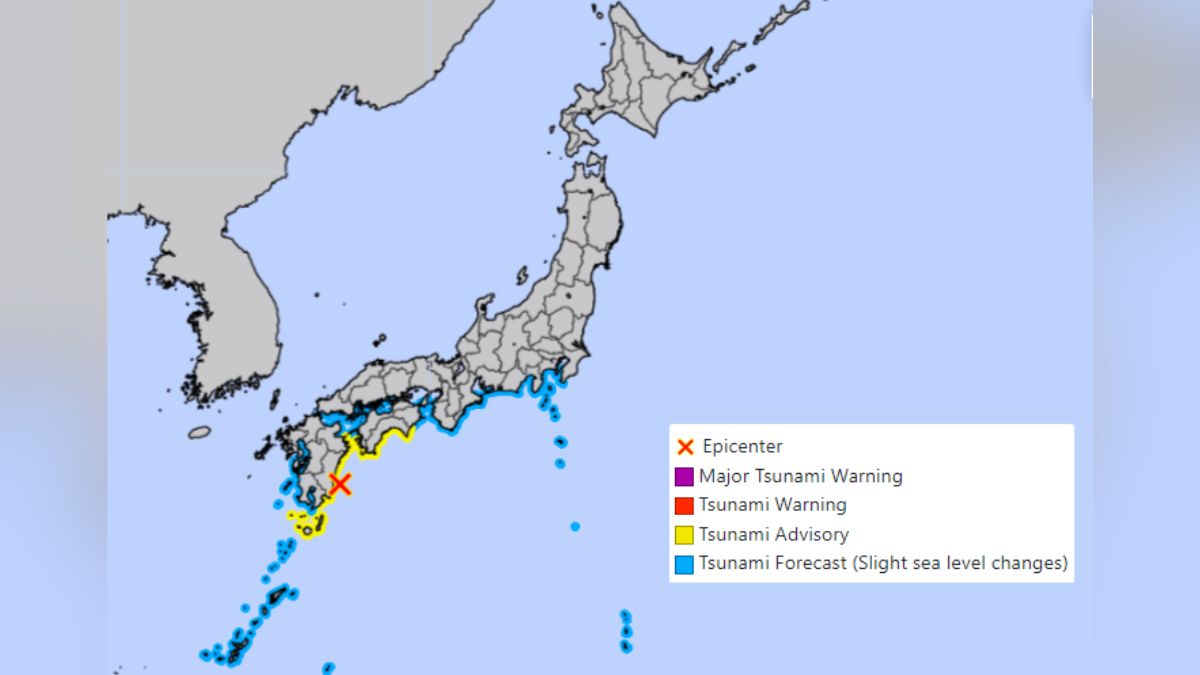An earthquake of magnitude 6.9 hit southern Japan on Thursday (August 8). It was followed by a powerful 7.1 tremor on the southern island of Kyushu, AFP reported, citing United States Geological Survey (USGS). A tsunami advisory has been issued.
The USGS reported that the initial earthquake occurred at 4:42 pm (0742 GMT) at a depth of 33 kilometers, around 29 kilometers southeast of Miyazaki on Kyushu. The second quake struck less than a minute later at a depth of 26 kilometers and was 20 kilometers northeast of Miyazaki.
The Japanese government established a special task force in response to the earthquakes, as stated in an official announcement.
Tsunami warnings
“Tsunamis will strike repeatedly. Please do not enter the sea or approach the coast until the warning is lifted,” the Japan Meteorological Agency said on X.
Tsunamis of up to one metre were expected to arrive or have arrived in some coastal areas in Kyushu and Shikoku islands, broadcaster NHK reported. No damage was immediately reported.
The government of Japan has already set up a special task force in response to the quakes, according to a statement.
Why Japan is prone to earthquakes, tsunamis
Japan is located on the western edge of the Pacific “Ring of Fire”, a path marked by active volcanoes and frequent earthquakes. Below the country’s surface, there are four major tectonic plates.
Impact Shorts
More ShortsThis makes Japan one of the world’s most tectonically active countries. In fact, it accounts and accounts for around 18 percent of the world’s earthquakes.
The group of islands, and approximately 125 million people who live here, experience around 1,500 jolts annually.
It is well-known that the high frequency of earthquakes has led to Japan developing special construction techniques and strict building regulations. Due to these measures, the country is able to get through even very strong earthquakes without taking much damage.
Japan also routinely holds emergency drills to prepare the residents for a major jolt.
With inputs from AFP
)